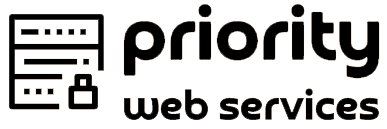Sharing is caring!
Website Security Tips
An effective website security suite follows a systematic framework that includes five functions you need to understand as a novice tech user. It entails identifying web properties, hardening patches, and environments, detecting alerts, responding to threats, and recovering from attacks.
1. Choose Effective Security Certificates
When you visit just about any website, you’ll notice “https” at the beginning of the URL, indicating the website is secure and trustworthy. More specifically, this indicates the website has a secure sockets layer (SSL) certificate, which more or less acts like a digital padlock to encrypt website information for safety and privacy. Ask your domain provider about security solutions that can best secure your website. Then, make sure to validate the certificates to keep your site authentic and trustworthy.
2. Update Your Website Security Suite
Updating your website security suite is part of hardening your environment against beckoning threats. It can be email phishing, hacking or ransomware, or identity theft. These attacks can happen anytime, even if you run your website on reputable content management systems like WordPress. To stay safe, check malware removal tools and update them. Then proceed to network security features and schedule an automatic upgrade. Lastly, enable web application firewalls and upgrade them to the latest version.
3. Encrypt Log-in Pages
The right SSL certificate should encrypt all the information between you and your visitors. However, it’s not a guarantee that your website will enjoy complete protection. You’ll need other secondary encryption tools to protect your site. Begin by initiating password support for logins. This feature allows you to create a strong password that applies whenever you intend to sign in. It’s also a valuable addition for frequent visitors that sign up on your website. Next, add two-factor authentication to your security suites, which allows you to control who can access your website’s information.
4. Scan Your Website for Vulnerabilities
Scanning your website for vulnerabilities can help you determine weak links and flaws to repair. CMS platforms like WordPress, Joomla, and Wix come with built-in-ready web scanners. But if you have a custom domain built on a personalized CMS, you may need to install a web scanner. The best website security scanner should identify malicious scripts, phishing scripts, and hidden cryptocurrency miners. They should also resolve malicious IPs, inject SPAM, and blacklisted status. In the end, you should have a malware-free site that guarantees future protection.
When you back up your website, it means you can restore the publications, customer information, and all communication post-attack. The best part? You don’t necessarily need to back up the information manually. Instead, check online for backup tools. Some naturally inject into your domain and siphon a copy of your web information for cloud storage. If the website goes down, you simply log in to the backup tool you chose and retrieve your stored information. This way, you don’t have to start building your website from scratch.
Conclusion
Hackers never relent to attack both secured and unsecured websites to steal information between visitors and web owners. So, learning to safeguard your website is crucial to your success path as a novice tech user. Up to this point, you’ve learned what web security entails and five basic tips for keeping your website safe. Let us know what worked for you.




